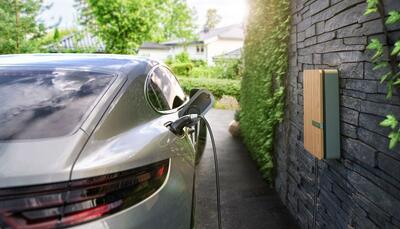EV Across The "Pond" - Toyota Choice Is The Right Vision; What Are The Brits Buying?
 |
Editor-in-Chief at AutoBeat Group
Gardner Business Media
On Automotive
The longest road in the U.K., the A1, runs from central London to central Edinburgh (and vice versa): 396 miles.
The longest road in the U.S., U.S. 20, runs from Boston to Newport, Oregon (and vice versa): 3,365 miles.
So keep that difference in mind as you consider this result from a survey conducted by Zap-Map, a U.K. electric vehicle charge point mapping service.
It found that of the owners of an EV, 25% also have a fossil fuel-powered vehicle.
As for the vehicle these dual-vehicle owners typically take:
- 85% of daily trips (e.g, shopping, school drop-off) are in the EV
- 71% use the EV for commuting
- 67% take the EV for trips of over 100 miles
- 55% opt for the EV for holidays “likely to involve long cross-country journeys”
“It’s an endorsement for EVs that even when the option is open to take the fossil fuel car, drivers are very happy to stick with electric,” said Melanie Shufflebotham, COO and co-founder of Zap-Map.
While a complete run on the A1 could be accomplished with a stop for one charge, that’s hardly the case for the U.S. 20.
///
Talking and Knowing Charging
Speaking of charging. . .“Alexa, find an EV charging station near me.”
Amazon announced that later this year drivers with Alexa enabled in their EVs will be able to say that and be directed to the nearest charging station that is part of the PlugShare network.
And if that happens to be an EVgo charging station (which happens to own PlugShare),
What’s more, the charging can be initiated and paid for through voice activation with Alexa.
Also. . .
While the navi screens of EVs show locations of charging stations, the information is quite limited. (E.g., I’ve been directed to chargers that were in the parking area of a private business—that was fenced off from non-employees. Not particularly useful.)
Another issue is that while the charger might be accurately located, it could be in use.
HERE Technologies—which is probably best known for its mapping for navi systems—has developed a service that not only locates charge points but predicts the likelihood of it being available at a point in the future.
Big Data
The HERE EV Charge Points service aggregates data from some 90% of the public charging operators then applies a machine learning algorithm that employs a variety of factors, such as the time of day, weather and traffic pattern data, to make the determination.
(HERE has lots of data: there are 34 million connected vehicles that provide information for its ADAS and other services. All in, there are some 170 million vehicles globally running HERE services.)
This is not an aftermarket system but something an OEM integrates into its vehicles’ systems.
According to a HERE spokesman, “It does not require the use of the HERE Platform, but certainly can be integrated into that, as well.”
Of course.
Powertrain Popularity circa 2033
A few data points from consulting firm Morning Consult that are worth keeping in the back of your mind. These are results from surveys conducted December 29 among some 2,200 Americans.
- 23% are “very likely” to buy or lease an EV in the next 10 years
- 24% are “somewhat likely” to buy or lease an EV in the next 10 years
- 40% are “very likely” to buy or lease a gasoline-powered vehicle in the next 10 years
- 27% are “somewhat likely” to go gas
And here’s a set of numbers that provides some validation for the Toyota approach:
- 25% are “very likely” to get a hybrid in the next 10 years
- 32% are “somewhat likely” to do the same
So in 2033 there’s some likelihood that
- 47% will have an EV
- 57% will have a hybrid
Although that’s 104%, directionally it indicates that hybrids are still going to play a significant role in transportation.
And while on the subject of powertrain choices. . .
Over in the U.K., overall new vehicle sales for 2022 were down 2%, to 1,614,063 (which makes it Europe’s second biggest market).
Looked at what was under the hoods in terms of market share in ‘22:
- Gasoline (a.k.a., “petrol”):
42.3% - Battery electric:
16.6% - Mild hybrid gasoline:
13.6% - Hybrid:
11.6% - Plug-in hybrid:
6.3% - Diesel:
5.1% - Mild hybrid diesel:
4.5%
Compared to 2021, EVs came on strong, showing a sales increase of 40.1% (267,203 in ’22, 190,727 in ’21), by far the biggest increase of any category (hybrids were second, with a 27.6% increase, though its sales numbers were lower, at 187,948 and 147,246).
Diesels? An annual decline of 38.9%, with mild hybrid diesels having the second-largest decline, 26.7%.
One thing is clear: in my opinion compression ignition has had its day.
end



